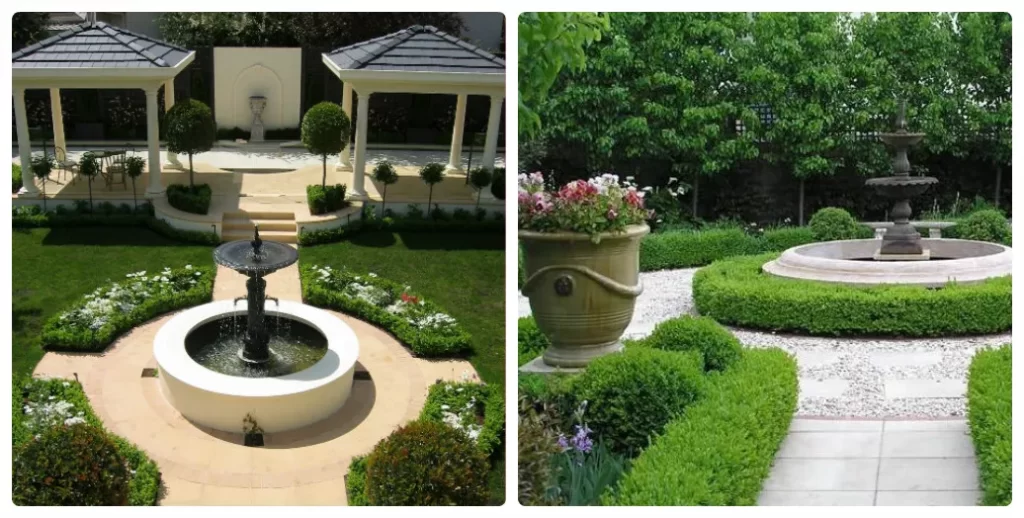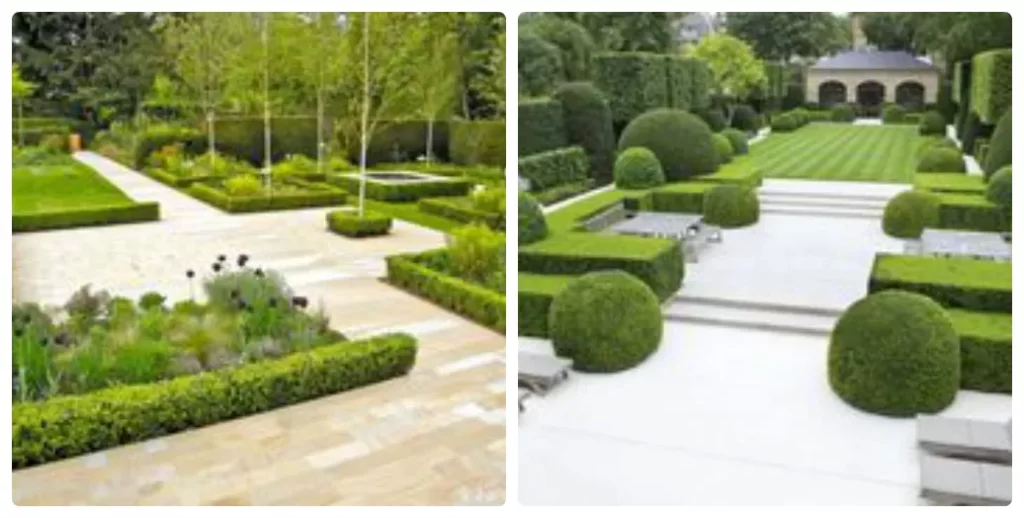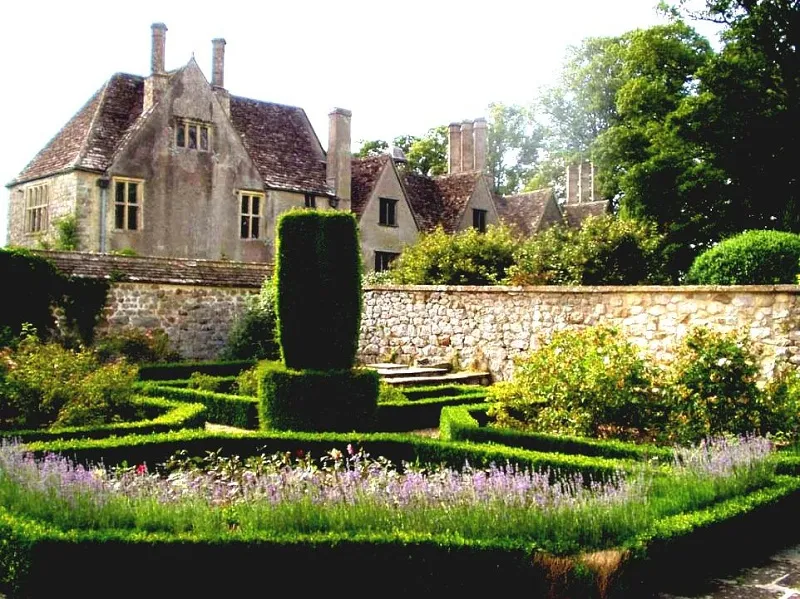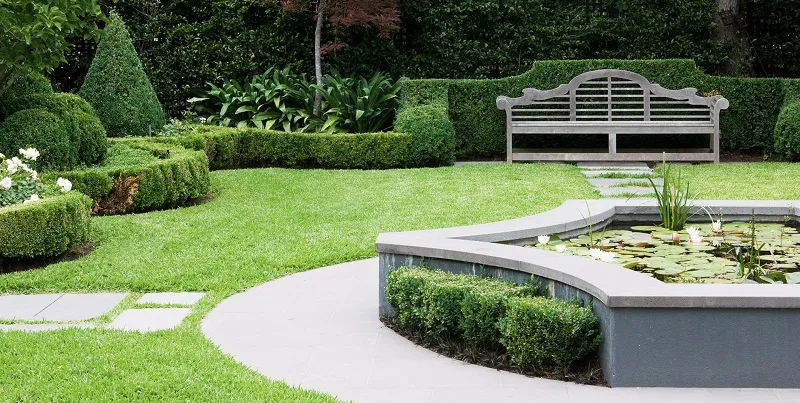The regular style (classic garden style) appeared for the first time in France during the Renaissance – Versailles Park.
The classic, formal or regular style of the garden involves geometrically correct planning with pronounced symmetry and rationality of the landscape composition.

The main elements of a classic garden
- the basis of the classical style is orderliness and rationality;
- straight symmetrical alleys;
- clear geometric shapes of flower beds, lawns, paving paths, reservoirs;
- fountains located in the center of the site or in the center of the composition created on the site;
- plants cut into geometric shapes;
- natural stone;
- availability of open spaces;
- the classic form of garden gazebos placed at the intersection of paths;
- the main element of this style is the “parterre”;
- flowers – one or two-color palette from annual plants.

Characteristic colors for a classic garden
Colors of a classic, regular style (classic garden style): the main color is green, which is easy to match with one other color (white, beige, sandy, black, light terracotta).

Accessories for a regular garden
- Sculptures, stone balls;
- arches, classic columns, vases;
- forged pergolas and benches;
- borders in a classic style;
- container planting of plants;
- high walls, hedges. Sometimes these walls demarcate zones in the middle of the site.

